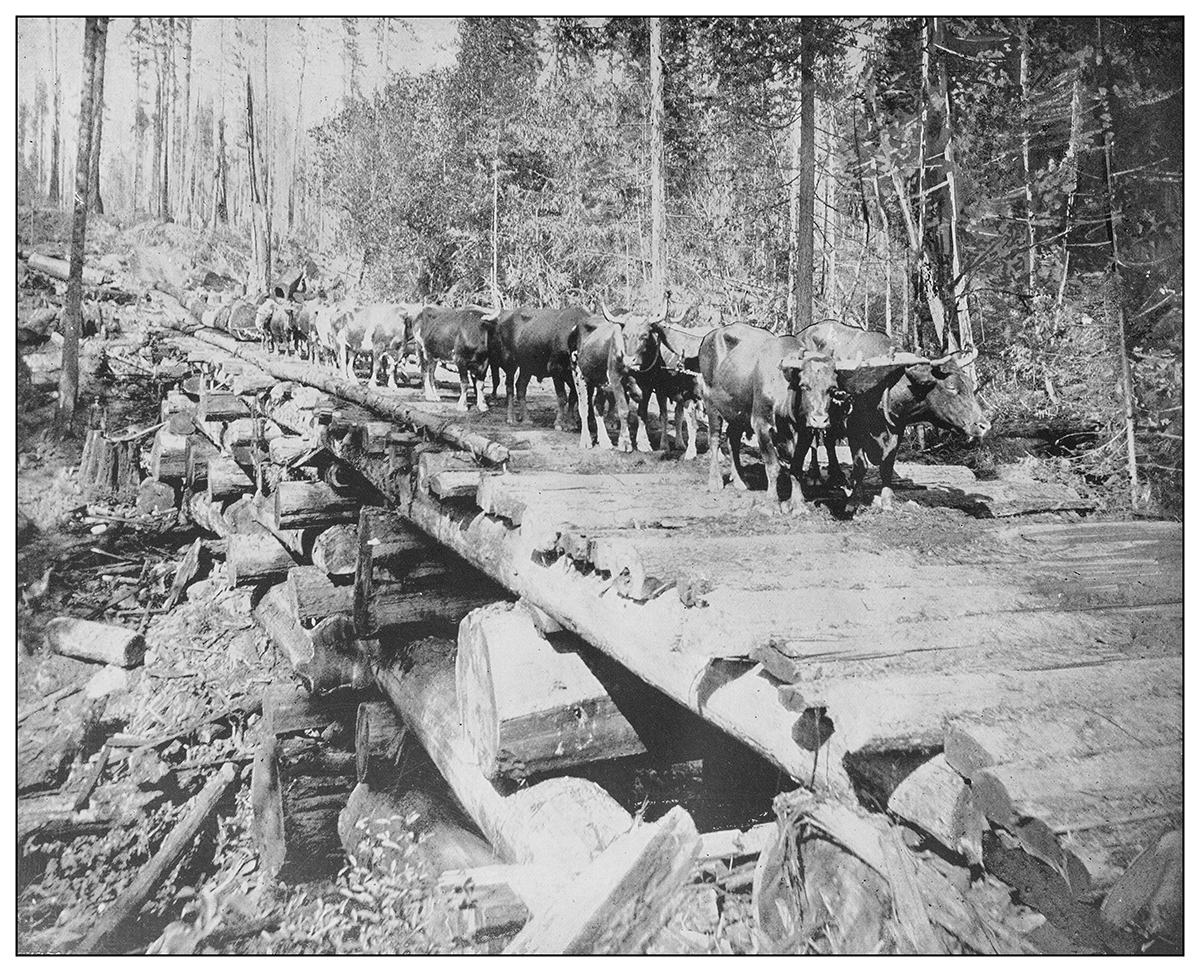Most of us have heard the term skid row, but you may not be aware that it actually has its origins in lumberjacking.
Dating back to the earliest pioneer days, as early as the 17th century, lumberjacks in the Pacific Northwest used teams of oxen and horses to haul cut timber out of the forest. They were working to get their timber to water so that it could be transported, or to a mill to be processes, and the dragging of these huge logs carved out rough roads in the forest floor.
Eventually, lumberjacks paved their rough roads with wooden slats greased with animal fat to help make moving the logs out of the wilderness easier. In other words, they created a “skid road” to move their timber. Eventually, they loaded their logs onto wooden skids, similar to what we still use today, to transport the timber.
It’s interesting to note that lumberjacks also employed “grease monkeys” to walk ahead of lumberjack teams to “grease the skids” and make it quicker and easier to drag the logs down the road.
So How Did Skid Road Become Skid Row?
Lumberjacks would often pitch their tents along the sides of the main skid roads out of the forest. If they were going to be there awhile, they may even throw up a simple shack. Over time, these logging camps became more developed, with a general store, saloon, etc. nestled in alongside the logging camp.
It is commonly believed that’s how skid road became skid row – because the logging camp would be lined up in a row alongside the skid road. As logging camps grew in size and complexity, they became neighborhoods or districts within larger towns and cities. These were poor, hardworking communities, often with few resources.
In Seattle, in the 1850’s, for example, a mill was located at the end of skid road, near historic Pioneer Square, and the surrounding area attracted cookhouses, inexpensive hotels for itinerant workers, and places where liquor was served. The land around skid road was largely tera-formed by lumberjacks and locals to make it habitable. At the time that the mill was built, it was the only flat land available, and the skid road was the divider between the affluent in Seattle and the more rowdy mill workers and loggers.
The rowdy side became known as skid row and has become a part of our American language.
Skid Row Today
By the early 20th century, skid roads had popped up in several locations throughout the Pacific Northwest, and the term skid road was commonly used to indicate a street or poor part of town, or a disreputable district within a city. During The Depression, derelicts and hoboes lived on “skid row,” and the term became associated with places where people with no money would gather.
Unfortunately, the concept of a skid row remains with us today. Nearly every major city in the United State, as well as many of the smaller ones, have a skid row area with large homeless populations and higher crime rates. In downtown Los Angeles, for example, Central City East is also known as Skid Row.
It’s kind of a weird story, but that’s where the term skid row comes from.



![[PRESS RELEASE] Conner Industries Announces Major Guardian Packaging Expansion](https://conner.b-cdn.net/wp-content/uploads/2024/10/Guardian-Packaging-Expansion-500x383.jpg)
![[PRESS RELEASE] Conner Industries Announces Website Dedicated to Integrated Packaging Division](https://conner.b-cdn.net/wp-content/uploads/2024/05/Conner-Packaging-Blog-500x383.jpg)


